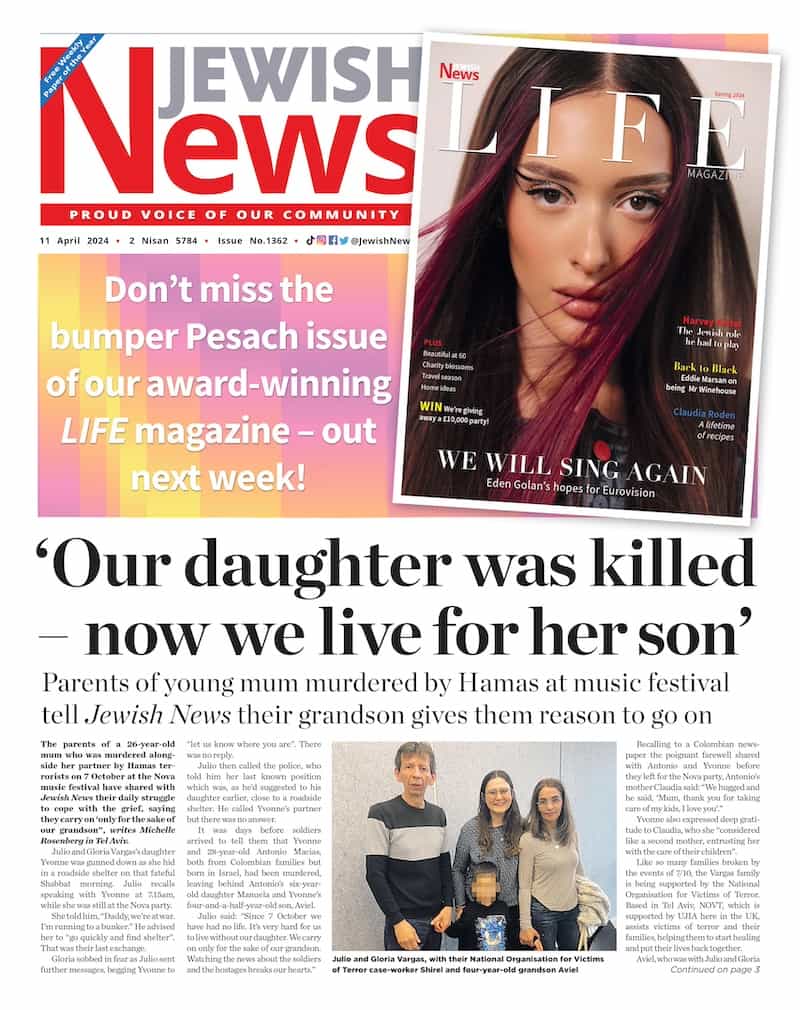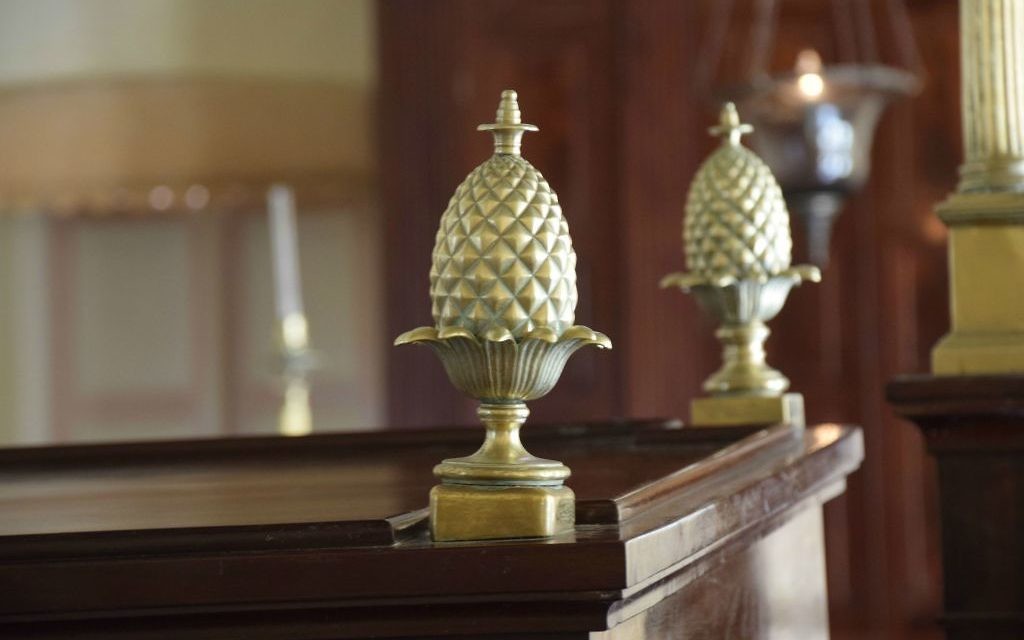Czech it out! Discovering hundreds of years of Jewish history
Andrew Sherwood pays a visit to the Czech Republic and discovers hundreds of years of Jewish history

Czech Republic, Land of Stories” is the slogan used by the Czech tourism board. And, as I discovered from a five-day trip there, the country has more than a tale or two to tell about its rich Jewish history.
For the most part, Jews here prospered from their arrival in 995, right up until the end of the 19th century.
Get The Jewish News Daily Edition by email and never miss our top stories Free Sign Up
But rising anti-Semitism and the Second World War all but eradicated what was one of the largest and most vibrant Jewish communities in the world. From a high point of 153 Jewish communities in the 1930s, the Czech Republic is now home to just 10.
Our first stop was in the capital, Prague, which nowadays has no more than 1,800 Jews. Once home to a thriving Jewish Quarter, all that remains is the town hall, six synagogues and the Old Jewish Cemetery, in which can be seen 12,000 tombstones.
Preserving the buildings, the artefacts inside them, and promotion of the area is down to the city’s Jewish Museum.
Housing around 100,000 books and tens of thousands of photographs and documents, it depicts the city’s once rich and prosperous Jewish life.

Visiting the synagogues – Jerusalem-Jubilee, Spanish, Old-New, Meisel, Klausen and Pinkas – is a must. Each interior is a stunning work of art, some of which have remained intact, despite the best efforts of the Nazis and Communist rule.
The Old-New Synagogue is the town’s oldest landmark, the main serving synagogue in Prague for 700 years and one of the oldest surviving in Europe. Its attic is also supposedly home to the remains of the Golem, the artificial clay creature brought to life by Rabbi Loew to protect the Prague Jewish community – which would go some way to explaining its longevity.
The walls of the Pinkas synagogue are covered with the names of 80,000 people who died during the Holocaust.
The only thing more jaw-dropping than the interior of the Jerusalem is its beautiful façade, while the Spanish, still used today as a Reform synagogue, also provides the perfect backdrop as a concert hall, which we sampled on the second night of our stay.
But Prague in terms of its Jewish roots is these days a world away from what it once was.
With one Jewish community, it is home to the only kosher hotel in the country, the King David, which is where we spent our first two nights, a five-star boutique kosher ‘Lemehadrin’ hotel with an in-house synagogue hosting daily services and mikvah.
The city has three kosher restaurants, two of which serve meat. Any visit to Prague also needs to take in the city’s castle, the largest complex of its kind in the world, and include a stroll along the Charles Bridge.

Our next destination was an hour’s drive away in Polná, a town with a fascinating Jewish history.
Only 16 families were initially permitted to live there in 1676 but, living independently, they built a two-storey rabbinical house in 1717. Its original ceiling and mikvah are still there to be seen today, but what was once a small bustling environment was ended by the Second World War.
In 1942, 98 Jews were deported to Terezin, only one of whom survived and never returned. All that’s left today are the remains of the buildings, thanks to funding from the European Union.
Třebíč was next on our itinerary. Like Polná, it no longer has a Jewish community. Three hundred people remained until the outbreak of war, but only some 20 survived the Holocaust.
A walk around will take you to the two synagogues, Jewish town hall and the rabbi’s house, while you can also visit another Jewish cemetery, this one with 11,000 tombstones.

The Hotel Joseph sits in the middle of the Jewish Quarter with its 17th-century mikvah, while a stone’s throw away is a delightful little café which specialises in kosher wine.
Brno, the second largest city in the country, was our next port of call, and any fans of Downton Abbey will be in for a real treat should they pay a visit to the Villa Stiassni.
The home of Jewish textile entrepreneur Alfred Stiassni, it would give Kenwood a run for its money in terms of splendour, grandeur and sheer magnificence. It was completed in 1929 and still contains most of its original furniture, but the Stiassnis were able to spend only nine years there, fleeing the country before being deported.
Hostility towards Jews in Brno remained until the end of Communism in 1989, after which monuments and buildings started to be restored.
The 300-strong Jewish community set up its own tourist information centre, one of the main attractions being the Jewish Cemetery with its 9,000 tombstones. Our final stop was Mikulov – near the Austrian border – and a visit to its Jewish heritage site.
It was no surprise to hear that, like other places we visited, there were no longer any Jews there, although there were 1,500 before the Holocaust.
The presence of the Upper Synagogue is a relic and reminder of the town’s Jewish ghetto – complete with its original Aron Kodesh. A thoroughly enjoyable and insightful trip, it was also a bittersweet one.
While enriching to learn about the history of Jews in the country – how they thrived and lived – it was equally disheartening to learn of their plight and how all that remains of them, except in Prague, is a series of splendid, yet isolated buildings from what is now almost a bygone era.
In all probability, the once-flourishing Jewish community of the Czech Republic, like many others throughout Eastern Europe, will never be resurrected.
Reflecting on that point back in London made the visit all the more poignant.
Travel contacts:
Andrew flew from London to Prague with British Airways: www.britishairways.com.
Czech Tourism: www.czechtourism.com
Jewish Museum, Prague: www.jewishmuseum.cz. Synagogues in Prague: www.synagogue.cz. King David Hotel, Prague: www.hotelkingdavid.cz. King Solomon Restaurant, Prague: www.kosher.cz
Jewish Quarter of Třebíč: www.czechtourism.com/c/trebic-unesco/. Hotel Joseph 1699, Třebíč: www.joseph1699.cz/home
Jewish community of Brno: www.jewishbrno.eu
Mikulov tourism: www.mikulov.cz
History of Jewish community in Mikulov: http://bit.ly/1Ms3IIt

Thank you for helping to make Jewish News the leading source of news and opinion for the UK Jewish community. Today we're asking for your invaluable help to continue putting our community first in everything we do.
For as little as £5 a month you can help sustain the vital work we do in celebrating and standing up for Jewish life in Britain.
Jewish News holds our community together and keeps us connected. Like a synagogue, it’s where people turn to feel part of something bigger. It also proudly shows the rest of Britain the vibrancy and rich culture of modern Jewish life.
You can make a quick and easy one-off or monthly contribution of £5, £10, £20 or any other sum you’re comfortable with.
100% of your donation will help us continue celebrating our community, in all its dynamic diversity...
Engaging
Being a community platform means so much more than producing a newspaper and website. One of our proudest roles is media partnering with our invaluable charities to amplify the outstanding work they do to help us all.
Celebrating
There’s no shortage of oys in the world but Jewish News takes every opportunity to celebrate the joys too, through projects like Night of Heroes, 40 Under 40 and other compelling countdowns that make the community kvell with pride.
Pioneering
In the first collaboration between media outlets from different faiths, Jewish News worked with British Muslim TV and Church Times to produce a list of young activists leading the way on interfaith understanding.
Campaigning
Royal Mail issued a stamp honouring Holocaust hero Sir Nicholas Winton after a Jewish News campaign attracted more than 100,000 backers. Jewish Newsalso produces special editions of the paper highlighting pressing issues including mental health and Holocaust remembrance.
Easy access
In an age when news is readily accessible, Jewish News provides high-quality content free online and offline, removing any financial barriers to connecting people.
Voice of our community to wider society
The Jewish News team regularly appears on TV, radio and on the pages of the national press to comment on stories about the Jewish community. Easy access to the paper on the streets of London also means Jewish News provides an invaluable window into the community for the country at large.
We hope you agree all this is worth preserving.
-
By Laurent Vaughan - Senior Associate (Bishop & Sewell Solicitors)
-
By Laurent Vaughan - Senior Associate (Bishop & Sewell Solicitors)
-
By Laurent Vaughan - Senior Associate (Bishop & Sewell Solicitors)
-
By Laurent Vaughan - Senior Associate (Bishop & Sewell Solicitors)






















